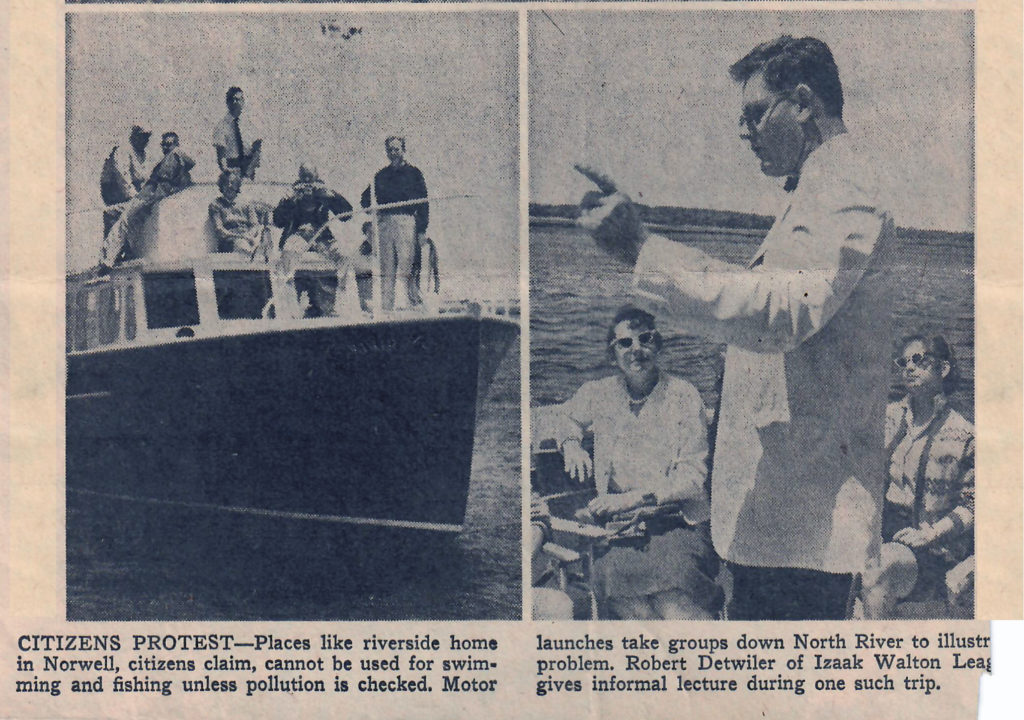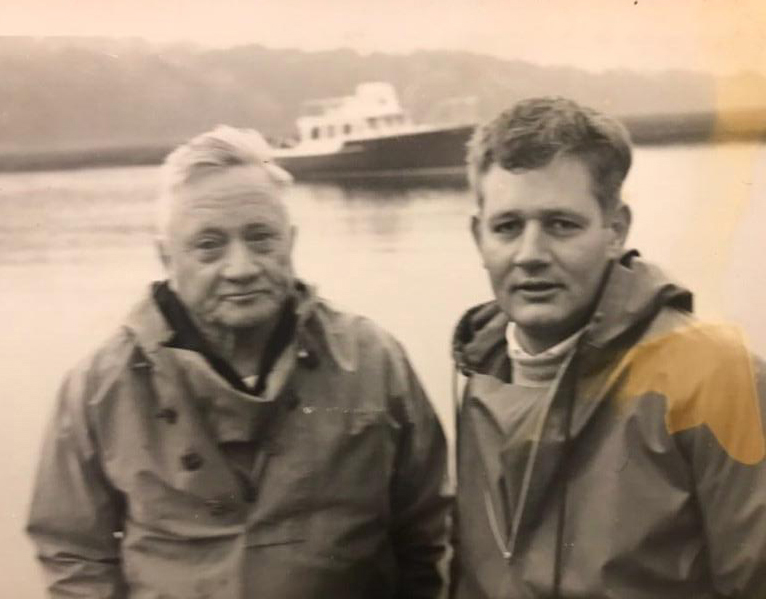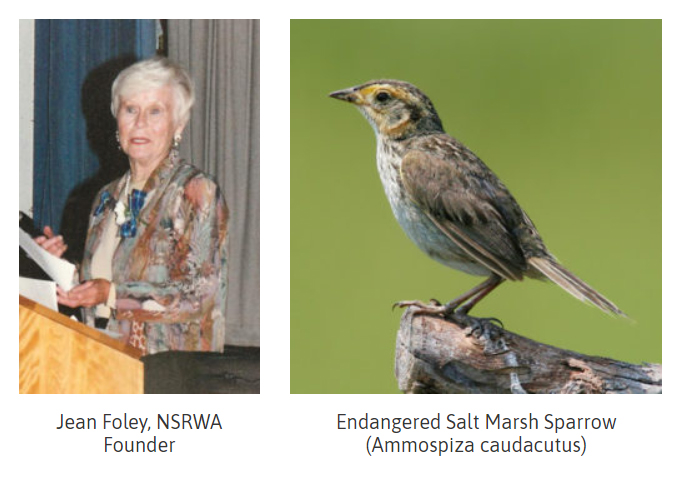NSRWA began as a group of 200 local citizens 50 years ago. Today, we have grown to more than 1,700 members across our region, making NSRWA the largest environmental organization on Boston’s South Shore. With our supporters, we strive to act as a catalyst for change by boosting the capacity of grassroots groups, fostering advocacy networks, and serving as a strong voice for our rivers and coastal waters.
The following is the first installment of a twelve-part series on the history of the organization.
NSRWA: The Origin
By Jim Glinski, Scituate
“The most alarming of all man’s assaults upon the environment is the contamination of air, earth, rivers, and seas with dangerous and even lethal materials.” ~ Rachel Carson, Silent Spring
 In the winter and spring of 1963, plans announced by the towns of Scituate and Rockland to construct sewage treatment plants, which would discharge treated effluent into local waterways, led to the founding of the North River Valley Conservation group. At the same time, Norwell’s Cap’n Bill Vinal wrote a series of newspaper articles and letters exposing the threats these sewage treatment plants posed for the North River. In 1964, this led some concerned local residents to organize the North River Chapter of the Izaak Walton League.
In the winter and spring of 1963, plans announced by the towns of Scituate and Rockland to construct sewage treatment plants, which would discharge treated effluent into local waterways, led to the founding of the North River Valley Conservation group. At the same time, Norwell’s Cap’n Bill Vinal wrote a series of newspaper articles and letters exposing the threats these sewage treatment plants posed for the North River. In 1964, this led some concerned local residents to organize the North River Chapter of the Izaak Walton League.
Named after a 17th century English angler and conservationist, the League was organized in 1922 in response to the uncontrolled discharge of industrial waste and raw sewage, unrestricted logging, and soil erosion which was threatening to destroy America’s waterways. The League was rooted in hundreds of communities across the country which established chapters to meet the needs of local conservation challenges and it soon became the first large-scale conservation organization in the country. The League’s mission is seen clearly in its member pledge which calls on members “to strive for the purity of water, the clarity of air and the wise stewardship of the land and its beauty and understanding of nature and the value of wildlife, woodlands, and open space; to the preservation of this heritage and man’s sharing of it.”

The North River Chapter would be led by Richard Burbank, its president, Robert Blake, Robert Detwiler, and Robert Sayrs. These were people who, as Bob Detwiler noted, “were excited to protect something precious.” Focusing on the threat of the proposed sewage treatment plants, the group sponsored boating trips on the North River so people could see the natural resources and beauty of the river. The most memorable action by the group was to invite Supreme Court Justice William O. Douglas to attend a League meeting and see first hand the beauty of the North River and to give a speech at Scituate High School. Around this time there were some limited successes on the state level to protect wetlands, such as the 1963 Jones Bill, which set restrictions and conditions on the filling of wetlands and the 1965 Hatch Bill which required advanced notice of intent to dredge or fill wetlands and to hold hearings with the state Department of Natural Resources. However, Bob Detwiler remembers the Justice voicing support for their efforts but telling him, “Bob this is really worth fighting for but you have to remember one thing, you may have won some battles but not the war.” Despite the group’s concerns, in 1967, the Scituate Sewage Treatment Plant, located on the Driftway next to the North River, was constructed and would become the object of many actions by local environmentalists.

Having brought attention to the potential dangers of local sewage treatment plants and having some success in getting state legislation passed, the North River Chapter of the Izaak Walton League lost its momentum. However, in the spring of 1969, Scituate resident Jean Foley, an avid birder, noticed that two types of sparrows had disappeared from the places she had regularly seen them on Scituate’s Driftway. She knew the area had seen changes in its environment since the construction of the sewage treatment plant and nearby condominiums. Contacting the Town to report her concerns and getting no response, and inspired by reading Rachel Carson’s Silent Spring, Jean began to enlist others concerned about the changing environment of the area to discuss what actions they could take to better preserve it. This group of citizens was looking for direction from people such as Jean and Jack Foley and Betty and Bill Finn. However, there was a split among this group about whether it was best to re-establish a chapter of the Izaac Walton League, which Jean favored, or to create a watershed association. Local wildlife biologist, John Lanier, had suggested the creation of a watershed association to Bill and Betty Finn and provided them with the by-laws of the Blackstone River Valley Watershed Association. In May 1970, an organizational meeting was held at Jean and Jack Foley’s home at which an overwhelming majority of those present decided to organize a watershed association. In July 1970, this led to the creation of The North and South Rivers Watershed Association, Inc. which was established as a corporation by the Commonwealth of Massachusetts.
In a Patriot Ledger article announcing its formation, the NSRWA stated that its purpose was to make “a concerted effort to preserve, restore, maintain, and conserve the natural state of the waters and related natural resources in the North and South Rivers.” To achieve its goals the Association would “promote programs of public information and education, scientific research, acquiring land or rights of land, and assisting and encouraging other organizations and public agencies to do the same within the watershed.”
